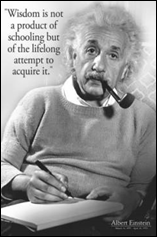 Some of the most common emails I receive are from students and new graduates regarding advice on getting started in their careers. I wrote about 5 tips on landing a job in professional sports in the past but wanted to also provide more general advice. Better yet, rather than just hear from me, I asked my friends and colleagues to also offer their best advice for students and young professionals.
Some of the most common emails I receive are from students and new graduates regarding advice on getting started in their careers. I wrote about 5 tips on landing a job in professional sports in the past but wanted to also provide more general advice. Better yet, rather than just hear from me, I asked my friends and colleagues to also offer their best advice for students and young professionals.
I am lucky enough to share with you advice from many experts in the fields of physical therapy, athletic training, strength and conditioning, and manual therapy – an impressive group of experts including Ken Crenshaw, Brian Tovin, Rafael Escamilla, Leon Chaitow, Eric Cressey, Tom Myers, Sue Falsone, George Davies, and myself. This is very similar to my Essential Reading Lists from expert clinicians that I published last year. A collaboration of thoughts from amazing people in several fields around the globe.
Please share this with your colleagues and classmates. Forward this along, stumble it, tweet it, talk about it on facebook, link to it on your site, and anything you can think of! For my experienced readers, please reply to this post with your advice as well. Let’s make this an impressive resource! These are all unedited and straight from each expert.
 Ken Crenshaw, ATC, CSCS – Head Athletic Training of the Arizona Diamondbacks
Ken Crenshaw, ATC, CSCS – Head Athletic Training of the Arizona Diamondbacks
I always encourage students to read, read, read as that will able a lot of information that may be applied to their profession. The desire to continue to learn beyond school is paramount. Think outside the box as there are many tools that may help in your future practice. Lastly communication and work ethic are 2 really big needs for me as they don’t seem to be taught in school and are very critical in our organization.
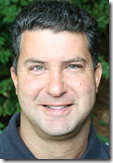 Brian J. Tovin, DPT, MMSc, SCS, ATC, FAAOMPT – Founder & Owner of The Sports Rehabilitation Center in Atlanta
Brian J. Tovin, DPT, MMSc, SCS, ATC, FAAOMPT – Founder & Owner of The Sports Rehabilitation Center in Atlanta
The best advice I could give is to develop your manual therapy skills…not just joint mobilization/manipulation, but soft tissue techniques, stretches, PNF, manual resistance,etc. Patients will often assess how good a PT is by how good their hand are, stating, “He/she has the best hands!”. There is a good reason for this as there is something special, or some may say “magical”, about the laying on of hands that is beyond psychosomatic. Make patients feel that coming to your clinic is different then going to a gym and seeing a trainer…this is what makes us different as physical therapists. As a PT, I hear patients complain that I saw (a clinician) and “they never even put their hands on me!”. Do not be that clinician.
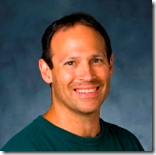
Stayed focused, finish what you start, and be persistent. I can’t tell you how many projects and studies that people start but don’t finish, or give up on. Identify a line of research or area of study that you are interested in, set specific goals regarding what you want to achieve, and then stay focused and be persistent until you have achieved those goals. Some of my research publications have taken 3 or 4 revisions (and 2-3 years) before they were finally published, and it would have been easy to give up after the first couple revisions. Once you meet your goals, set new goals and start the whole process over. Limit your goals and don’t spread yourself too thin by being involved in too many areas – stay focused. Be really good at a few things rather than mediocre in a bunch of things. Finally, be a glass half full type of person rather than a glass half empty type of person, and optimistic rather than pessimistic. You will be more likely to endure the trials and tribulations you face, and come out stronger, more determined, and in the end, more successful in your endeavors.
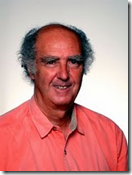
I recommend a thorough understanding of Hans Selye’s general and local adaptation syndrome concepts (some good info here). This suggests that whatever the actual health problem – and in fact the more complex the problem the more important this formula becomes – it is essential to appreciate that almost all health issues can be seen to represent failed/or failing, adaptation. Once this is understood it becomes important to consider which adaptive stressors can be identified – whether lifestyle, biomechanical, biochemical or psychosocial – and how these can be modified or eliminated. These adaptive stressors represent one facet of the therapeutic equation, which might involve postural, respiratory, nutritional, behavioral or functional factors. The other part of the equation that needs to be considered relates to way(s) in which functionality might be enhanced, so that the stress burden can be better managed. Aspects of this would entail improved strength, stability, flexibility and mobility – along with sleep, rest, exercise etc.
So the bottom line of this therapeutic formula boils down to – reduce the adaptive load, while improving function. The only other choice is to treat symptoms. Into this mix it is also critical that we tailor the therapeutic interventions to the ability of the individual to respond positively – so that treatment doesn’t become yet another stress burden.
Selye H: The stress of life, Philadelphia, 1976, McGraw Hill.
Chaitow L Blake E Orrock P Wallden M 2007 Naturopathic Physical Medicine Elsevier
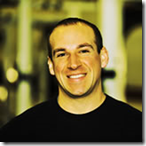
My biggest piece of advice would be to recognize that a degree (or certification) is really just a foot in the door, and that the real learning begins when you are “thrown into the fire.” Sure, it kind of stinks to hear that $200K+ in college expenses and 4+ years of energy spent merely gets you to the starting line. However, it’s exciting because it’s a sign that all the work ahead is about establishing yourself as a “cut above” other professionals in your field. When your goal changes from “the minimum standard” to “excellence,” life is more fun and the real learning and motivation begin.
In college, short of failing out, there really isn’t any pressure. Universities don’t send you home because they don’t like your attitude, energy level, attendance/punctuality, or new haircut. In the real world, though, you’ve got to step up your game. A little mantra I live by with our staff is “Clients (patients) hire and fire you every day. You can’t have bad days.”
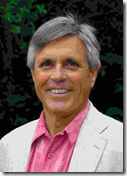
There is one Advice God, but expressed as a Trinity:
1) Be clear in your intent. Knowing what you intend to do can inform your hands and inform the client / patient at a subtle level in such a way that makes up for your ignorance of exactly where everything is and what is going on in their tissues. The other side of that coin – mucking around hoping to find something that works (the ‘press and pray’ strategy) is occasionally a way of causing damage.
2) The contrary but still consistent advice is: experiment. When what you know is not working, make a conscious choice to explore in search of a new way. How else do you think all the things you know now were discovered? Most scientific discoveries are not made to the sound of ‘Eureka!’, but to the sound of ‘Hunh?’.
3) The 11th commandment: Thou shalt not bore God. If you are bored, you are doing something wrong. This is the most interesting profession going and it’s a largely unexplored area. If you’re bored, you got down a cul-de-sac, and you need to back out and go on in another direction. If all your sessions start looking the same, this is a good indication you are bored. Get help via mentorship or a new class.
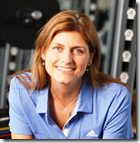
1) To be open to all ethical ideas, yet critical of where it fits into your personal practice. No one has it figured out. If someone did, we would all be doing it. Just because someone uses a technique that you don’t, it doesn’t make you or them right or wrong. It’s just different. Maybe it fits into your practice, maybe it doesn’t. And that is ok. Even if you learn that you don’t want to use that technique, then you learned something that will shape you as a clinician.
2) Learn from everyone around you, and meet as many “big names” in the field as you can. Introduce yourself to someone after you watch them speak, drop them a question via email about something they said in their talk, etc. You’d be surprised at how many people will respond to you, and what doors these connections can open for you as you move along your path.
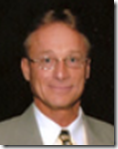
Develop a passion for what you do, always keep the intrinsic love of learning, provide the best care to your patients based on the best evidence, it’s a profession (not a job), so contribute when you can, maintain a balance in life, and have “FUN” along the way.
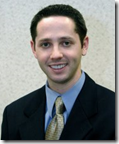
1) Surround yourself with the best – that is what I did. If you like tennis rehab and you want to get into tennis, seek out the experts in that field, learn from them, work with them, and become one of them.
2) Work harder than everyone else. That is the American way, isn’t it? Our society will allow those that want to outwork others to do so, and this always results in good things. It comes down to the Pareto principle. You can apply it in many ways, but basically 20% of the people do 80% of the work. What percentage do you want to be in?
3) Always have a sound scientific, and hopefully evidence based, rationale behind each and every thing that you do. Every exercise, every set, every rep… Everything. Not only to provide rationale for your patients and clients, but also to challenge yourself to always update and enhance what you do. I have always been this way and you can see it in my articles, like the summation of many years of work that I published in JOSPT last year – The Scientific and Clinical Rationale Behind Exercise Selection for the Glenohumeral and Scapulothoracic Musculature.
4) Shape your practice on as many different thought processes as possible. Or, better said, don’t get locked into one treatment pattern. That is tunnel vision. Take the best out of everyone and become yourself.
What else??? Do you have more advice you would like to share? Please comment on this post with your contribution. Please spread this post on your websites, in emails, on facebook and twitter, or whatever way you can to help spread this great advice!
Sign up for my FREE newsletter for even more great content!




